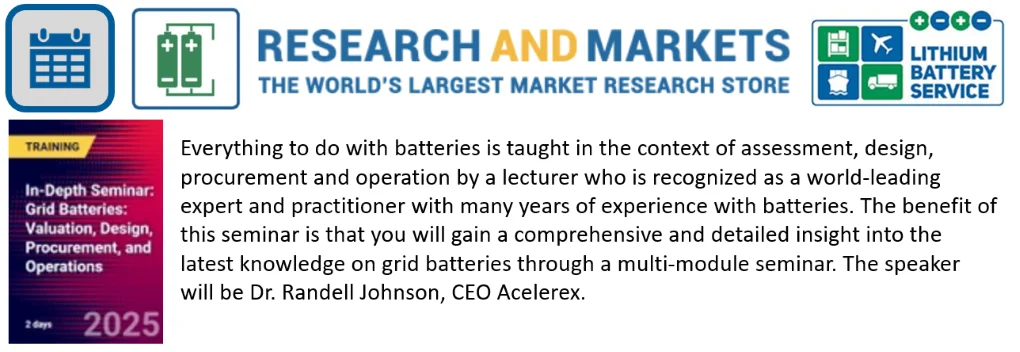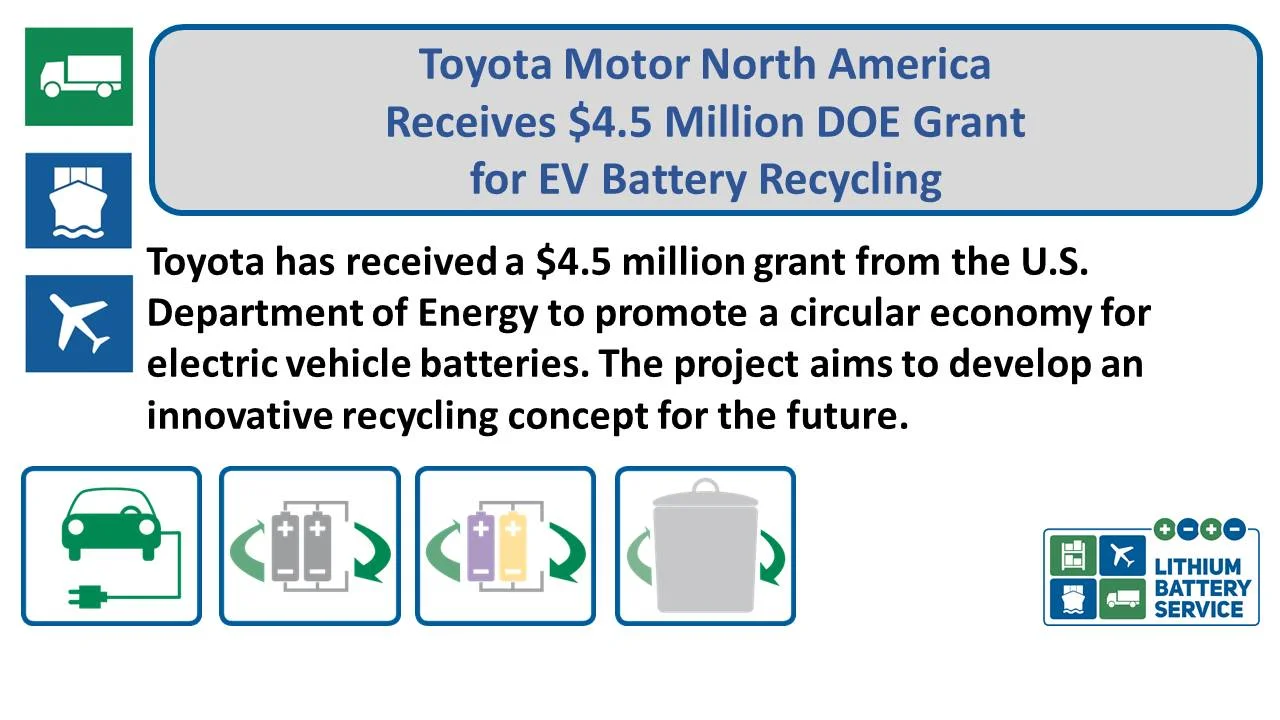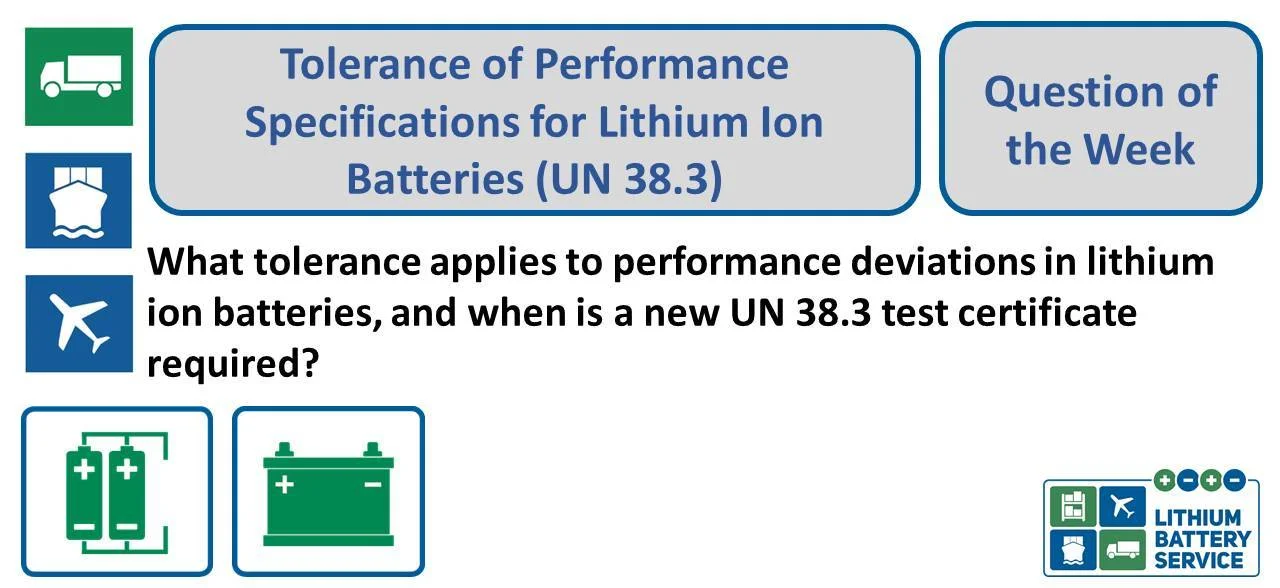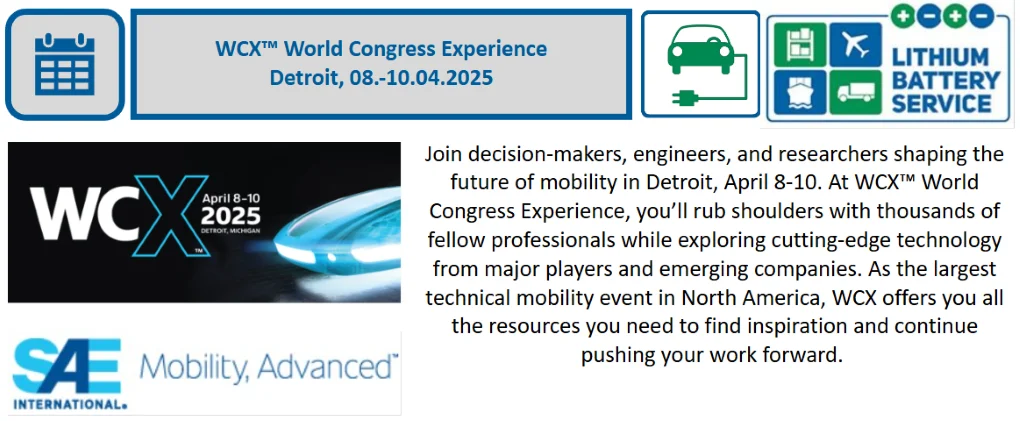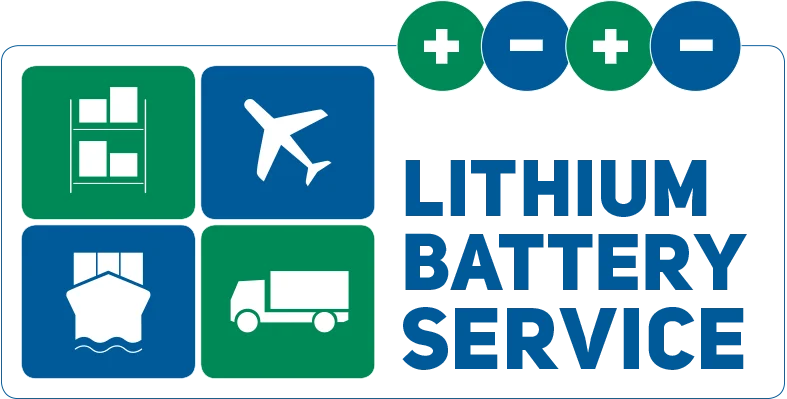Question of the day
Is it necessary to declare a lead-fleece battery in a mobile workplace as dangerous goods if it is to be shipped by air transport - if so, under which UN number?
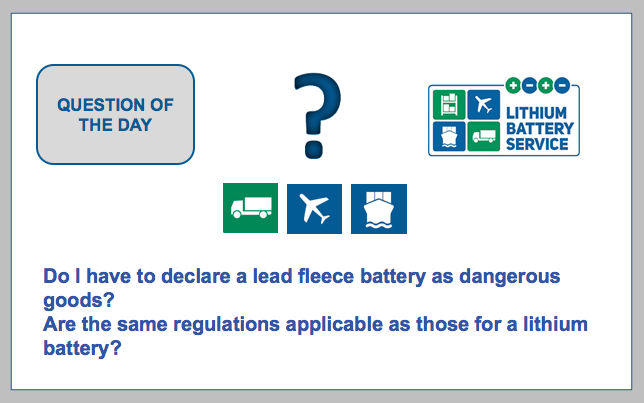
Question of the day:
Is it necessary to declare a lead-fleece battery in a mobile workplace as dangerous goods if it is to be shipped by air transport - if so, under which UN number?
A mobile workstation is to be shipped from Germany to Hong Kong by air. The mobile workstation includes a rechargeable battery: rechargeable lead-fleece battery (dry) 12V 120Ah, maintenance-free, non-tilting.
From the conversion table the battery would have a watt-hour rating of 1440 Wh.
My question:
Do I have to declare it as dangerous goods at all (since it is no lithium ..... battery)?
If yes, under which UN number?
Road transport as per ADR and sea transport as per IMDG code
We do not have an extra checklist because these lead acid batteries are covered by UN 2800 Batteries, wet, non-spillable according to the road regulations of the ADR and are exempted if the manufacturer confirms the conditions described in special provision 238.
Here is the text of special provision 238:
238 a) Batteries can be considered as non-spillable provided that they are capable of withstanding the vibration and pressure differential tests given below, without leakage of battery fluid.
Vibration test: The battery is rigidly clamped to the platform of a vibration machine and a simple harmonic motion having an amplitude of 0.8mm (1.6mm maximum total excursion) is applied. The frequency is varied at the rate of 1 Hz/min between the limits of 10 Hz and 55 Hz. The entired range of frequencies and return is traversed in 95+_ 5 minutes for each mounting position ( direction of vibration) of the battery. The battery is tested in three mutually perpendicular positions ( to include testing with fill openings and vents, if any, in an inverted position) for equal time periods.
Pressure differential test: Following the vibration test, the battery is stored for six hours at 24°C+- 4°c while subjected to a pressure differential of at least 88 kPa. The battery is tested in three mutually perpendicular position) for at last six hours in each position.
b)Non-spillable batteries are not subject to the requirement of ADR if, at a temperature of 55°C, the electrolyte will not flow from a ruptured or cracked case and there is no free liquid to flow and if, as packaged for carriage, the terminals are protected from short circuit.
Air transport according to ICAO TI / IATA DGR
In air transport these lead-acid batteries are not subject to the dangerous goods regulations either, if they meet the requirements of Special Provision A67.
The Air Waybill must then include the text: "Not restricted as per A67".
Here is the text of Special Provision A67: Wet cell batteries can be considered as non-spillable provided that they are capable of withstanding the vibration and pressure differential tests given below, without leakage of battery fluid.
Vibration test: The battery is rigidly clamped to the platform of a vibration machine and a simple harmonic motion having an amplitude of 0.8 mm (1.6 mm maximum total excursion) is applied. The frequency is varied at the rate of 1 Hz/min between the limits of 10 Hz to 55 Hz. The entire range of frequencies and return is traversed in 95 ± 5 minutes for each mounting position (direction of vibration) of the battery. The battery must be tested in three mutually perpendicular positions (to include testing with fill openings and vents, if any, in an inverted position) for equal time periods.
Pressure differential test: Following the vibration test, the battery is stored for six hours at 24°C ±4°C while subjected to a pressure differential of at least 88 kPa. The battery must be tested in three mutually perpendicular positions (to include testing with fill openings and vents, if any, in an inverted position) for at least six hours in each position.
Note:
Non-spillable type batteries which are an integral part of, and necessary for the operation of, mechanical or electronic equipment must be securely fastened in the battery holder on the equipment and protected in such a manner so as to prevent damage and short circuits.
Non-spillable batteries are not subject to these Regulations when carried as cargo if, at a temperature of 55°C, the electrolyte will not flow from a ruptured or cracked case. The battery must not contain any free or unabsorbed liquid. Any electrical battery or battery powered device, equipment or vehicle having the potential of dangerous evolution of heat must be prepared for transport so as to prevent:
(a) a short circuit (e.g. in the case of batteries, by the effective insulation of exposed terminals; or in the case of equipment, by disconnection of the battery and protection of exposed terminals); and
(b) unintentional activation
The words “Not Restricted” and the Special Provision number must be included in the description of the substance on the Air Waybill as required by 8.2.6, when an Air Waybill is issued.
In equipment or without equipment
And these requirements apply regardless of whether these lead batteries are shipped without equipment or installed in equipment.
Confirmation from the manufacturer of the mobile workstation
What you need from the manufacturer in writing, is the confirmation that the battery in your workplace fulfills the requirements of Special Provision 238 or the Special Provision A67.
